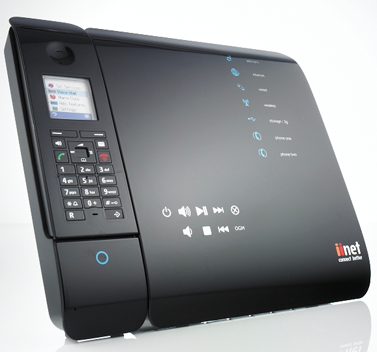
While it may surprise some people, modems were around long before the ‘internet age’. In fact, modems were being used in Teletype as early as the 1920s. It’s ridiculous to think that a modern modem such as iiNet’s BOB originated from 1940’s technology which was the size of a fridge!
Later, during the Cold War in the late 1940s, the US Air Force co-opted the modem to transmit radar images. It did this by converting the digital radar images into analogue transmissions and back again, allowing the messages to be sent across the existing telephone network.
In the late 1950s, AT&T developed the first commercial, mass-produced computer modem, and then called a “digital subset”, which SAGE computers across the United States at a rate of 110 bits per second.
In 1962, AT&T then introduced the first commercial modem, the Bell 103, which communicated at around 300 bps, and included a full-duplex transmission and frequency-shift keying (FSK).
AT&T held the monopoly on the phone system in the US until 1984. Until that time, only AT&T could provide modems to work on its network, which essentially stifled innovation in the industry.
However, after the Carterfone decision, non-AT&T companies started to develop and sell their own modems. One notable innovation was the Hayes 80-103A, a 300 baud Bell 103A-compatible modem which turned out to be the first modem created for a personal computer.
Designed by Dale Heatherington and Dennis C. Hayes, this new modem was designed to be used with the S-100 bus computers of the day, such as the Altair 8800 and the IMSAI 8080. It was the first modem to connect directly to the phone, and was affordable for the average user.
Heatherington and Hayes started up DC Hayes Associates, which in 1981, launched its seminal Hayes Stack Smartmodem. This smartmodem was the first to integrate its own command set, which would later become an industry standard.
Using a series of ASCII strings sent to the modem through its RS-232 serial port, users could initialise, autodial, answer, hang up, and more. Prior to this, most users had to do all this manually.
Throughout the late 70s and early 80s, there From the mid-1980s onwards, IBM-styled PCs dominated the market, which prompted development of internal ISA modem cards.were a number of modems on the market, with the fastest communicating at 1200 bps.
Meanwhile, in the external modem market, technology advanced to produce speeds of 2400 bps, then 4800 bps, and then on to 9600 bps, 14400 bps, 28800 bps, and beyond.
In the mid-90s, modem speeds ranged between 28.8 Kbps and 33.6 Kbps. As technology advanced further and lowered production prices, internal PCI modems became standard components of PCs and laptops.
In 1996, Brent Townshend came up with the technology for the 56k modem. Voice modems that allowed voice calls to be made through a PC were also introduced around this time.
In the years that followed, technology kept advancing to provide faster and faster speeds for internet users. From the all-digital phone lines (ISDN), to modems that connected through the cable network, to ADSL connecting via copper phone lines.

